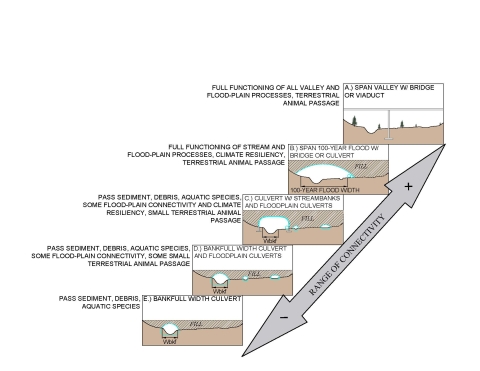Photo By/Credit
USFWS/Adapted from USFS, 2008
Date Shot/Created
04/24/2024Media Usage Rights/License
Public Domain
Image
Five panels displaying possible crossing structures. At the lowest range of connectivity is a bankfull width culvert which passes sediment, debris and aquatic species. The second panel up is a bankfull widht culvert and floodplain culverts passing sediment, debris, aquatic species, and providing some floodplain connectivity and some small terrestrial animal passage. The third panel up is a culvert with streambanks inside and floodplain culverts passing sediment, debris, and aquatic species and providing some floodplain connectivity and some small terrestrial animal passage. The fourth panel up is a culvert or bridge spanning the 100-year flood width, providing full functioning of stream and floodplain processes, climate resiliency and terrestrial animal passage. The fith panel up is a valley spanning bridge of viaduct which provides full functioning of all valley and floodplain processes and terrestrial animal passage.
